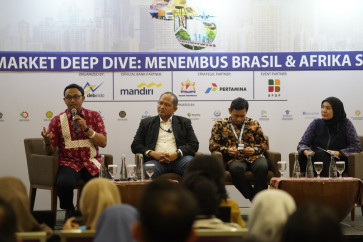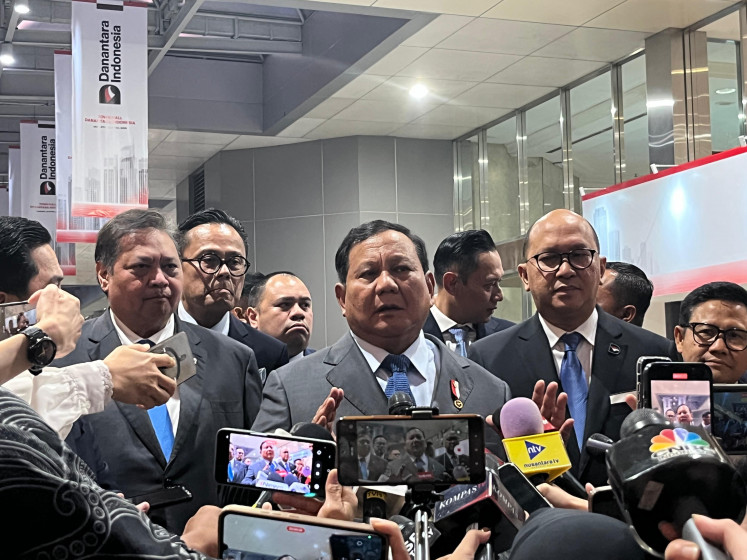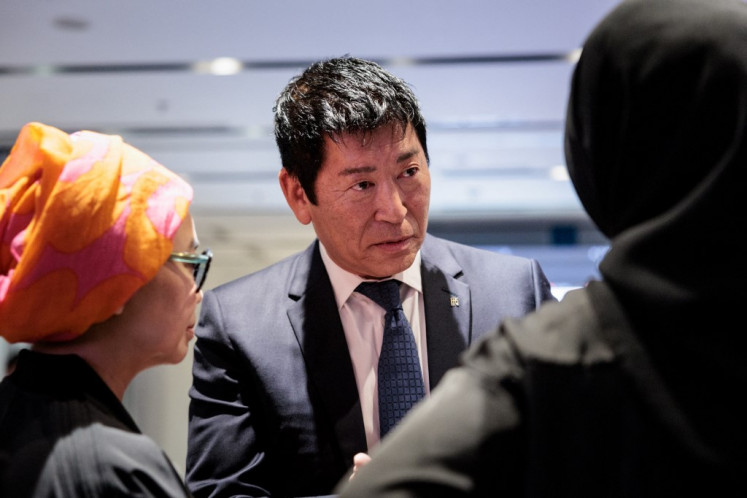Popular Reads
Top Results
Can't find what you're looking for?
View all search resultsPopular Reads
Top Results
Can't find what you're looking for?
View all search resultsTechnology and intellectual property in Indonesia
We can say that the first technology was a rock
Change text size
Gift Premium Articles
to Anyone
W
e can say that the first technology was a rock. People in prehistoric times used rocks to make fire. From a rock to a cellular phone, laptop, PC, computer, TV and all the latest technology that help us improve our daily lives. Technology can also link us into social media and help us communicate with each other.
Meanwhile, trade involves the transfer of the ownership of goods and/or services.
Nowadays, there is an International Association for Technology Trade (IATT), which is a consortium of technology organizations, strategic advisors, government agencies and corporate members seeking to generate successful global business opportunities with a key focus on emerging economies.
The association runs ongoing trade missions to developing regions, sponsors and co-promotes conferences and symposia, and provides strategic services to companies entering and expanding into emerging markets.
We have to realize that the technology trade can influence almost all businesses in the world.
The technology trade is also very good for businesses, it can bring profits and benefits and of course national progress.
We can link the intellectual property system with the creations of the mind, such as inventions, literary and artistic works, designs, symbols, names and images that are used in commerce.
Intellectual property is protected by intellectual property law, for example, patents, copyrights, industrial designs and trademarks, which enable people to earn recognition or financial benefits from that which they have invented or created. By striking the right balance between the interests of inventors and the wider public interest, the intellectual property system aims to foster an environment in which creativity and innovation can flourish.
People talk a lot in the technology trade about the intellectual property system but what is it? How does it apply to the technology trade? The intellectual property system is the foundation of the technology trade.
The term refers to the system that can give legal protection to the technology trade itself.
Therefore, it is clear that the technology trade is linked to the intellectual property system.
The intellectual property system is designed not only for legal protection but also to appreciate the creator or the inventor. A good intellectual property system will contribute to the promotion of technological innovation and to the transfer and dissemination of technology, to the mutual advantage of producers and users of technological knowledge and in a manner conducive to social and economic welfare and also to a balance of rights and obligations.
Indonesia is a member of the World Trade Organization (WTO), and has ratified the Agreement on Trade-related Aspects of Intellectual Property (TRIPs Agreement).
Indonesia has also ratified the Paris Convention. It means that, generally speaking, Indonesia's intellectual property legislation is now comprehensive, covering all aspects of protection of intellectual property in accordance with international standards, however, enforcement mechanisms still need to
be strengthened.
Since signing the TRIPs Agreement in 1994, Indonesia had 10 years under the agreement to harmonize all of its intellectual property laws, including launching new laws for other sectors of intellectual property such as trade secrets, industrial designs and integrated circuit lay-outs. All of these laws were required to be on the books by the end of 2004 at the latest. By 2000, Indonesia had enacted three new laws: Law No. 30 on trade secrets, Law No. 31 on industrial designs and No. 32 on integrated circuit lay-outs.
Meanwhile, the three existing laws on copyrights, trademarks and patents also had to be adjusted to accord with the TRIP's requirements. The copyright, patent and trademark laws have been revised with the new laws No. 14 and No. 15 of 2001 on patents and trademarks respectively, while copyright law was revised in 2002 by Law No. 19 and was revised again in 2014 by Law No. 28.
Indeed, Indonesia's intellectual property law is now comprehensive, covering all aspects of protection of intellectual property in accordance with international standards, even though enforcement mechanisms still need strengthening.
Now thanks to the improved Indonesian intellectual property system, the government can maximize the utilization of the technology trade through the Agency for Assessment and Application of Technology (BPPT).
The BPPT mission is to boost engineering technology by improving the competitiveness of industrial products, improving public service agencies and reinforcing the nation's independence.
The government can also maximize the utilization of the technology trade through the Indonesian Institute of Sciences (LIPI), whose main duty is to carry out scientific research in accordance with the provisions of legislation in force.
In sum, a good intellectual property system can lead Indonesia, and other countries, to transfer, learn and master technology well.
________________
The writer is a managing partner of Dwipo Lubis Baskoro & Partners law firm. The views expressed
are his own.










